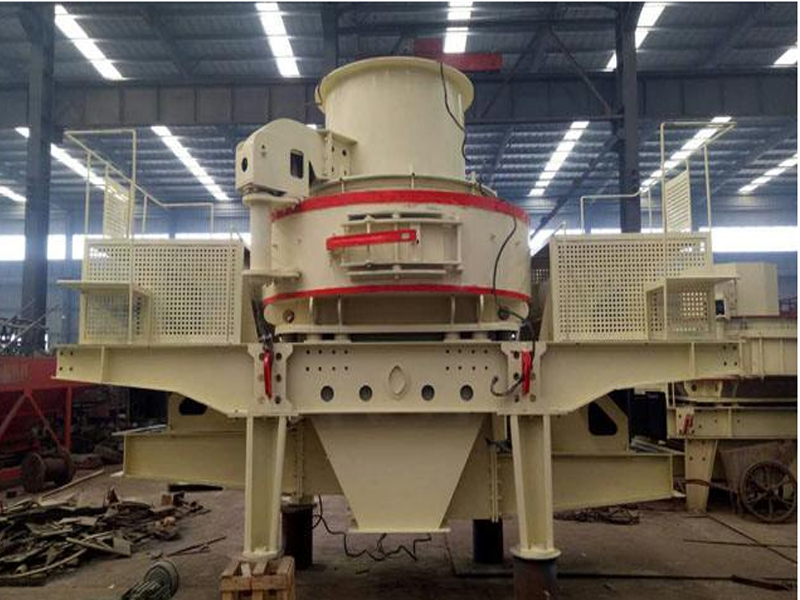Processing Capacity:
Feeding size:
Applied material:
Application field:

Gravel crusher is also called sand crusher,sand making machine,which is suitable for crushing and shaping of soft or medium-hard and extremely hard materials. It is widely used in various ores, machine-made sand plants, etc. For high-hard and extra-hard materials, it has higher output efficiency than other types of crushers.
The equipment is mainly composed of seven parts: feeder, distributor, vortex crushing cavity, impeller experience, main shaft assembly, base transmission device and motor.The impeller structure of gravel crusher has been optimized,which is a new three-port deep cavity with a 30% increase in throughput. The whole set of equipment uses high-quality alloy materials. The casting equipment process is rigorous and the technology is advanced, which guarantees the quality of the equipment;in addition, the design of the peripheral guard plate of the equipment is flexible, which can realize a U-turn up and down, which facilitates the replacement of worn parts of the equipment and prolongs the service life of the equipment.
The equipment realizes multiple feeding methods in the center and the periphery, and the equipment startup and operation can be realized on the automatic control panel, which enhances the safety of equipment production and facilitates user operation.
The material enters the crusher from the feed hopper, and the material is divided into two parts by the distributor. One part enters the high-speed rotating impeller from the middle of the distributor, and is rapidly accelerated in the impeller. The acceleration can reach hundreds of times the acceleration of gravity. Throw out from the three evenly distributed runners of the impeller at a speed of 60-70 m/s.First of all, part of the material that has fallen from the surrounding area of the distributor is impacted and crushed,then it impacts on the material lining in the vortex cavity, rebounds by the material lining, and impacts diagonally upwards to the top of the vortex cavity, and then changes its direction of motion and deflects to move downward.The material emitted from the impeller runner forms a continuous material curtain.Such a piece of material is subjected to two or more chance impacts, frictions and grinding and crushing effects in the vortex crushing cavity. The crushed materials are discharged from the lower discharge port. It forms a closed circuit with the circulating screening system. Generally, the material can be crushed into less than 20 meshes after three cycles. In the whole crushing process, the materials will impact and crush by themselves, instead of directly contacting the metal components, but will impact and friction with the material lining to crush, which reduces corner pollution and prolongs mechanical wear time. The ingenious air flow self-circulation inside the vortex cavity eliminates dust pollution.
1. Energy-saving and environmental protection: The combined throwing head only needs to replace the worn parts, reducing the cost by only 30%; the air flow inside the vortex cavity is self-circulating, with less dust and low noise.
2. Less abrasion and durability: During the production process, the stone can form a protective layer, and the machine body is not abraded; the peripheral guard plate can be turned up and down to exchange the worn parts and prolong the service life.
3. Large throughput and easy maintenance: the deep cavity impeller increases the throughput by 30%; the hydraulic cover opening device is convenient for maintenance.
4. Vulnerable parts: Optimize the design of the impact angle of the material in the crushing chamber, and the vulnerable parts are not easy to wear and consume. A small number of vulnerable parts are made of super hard and wear-resistant materials, which are small in size, light in weight, and suitable for easy replacement of accessories.
1. Even and continuous feeding can ensure the equipment's sand making operation.
2. Before starting the machine, check whether the observation door of the vortex adjustment chamber is closed tightly to prevent the material from rushing out of the observation door of the crushing chamber, which may cause danger.
3. Seen from the direction of the feed inlet, the impeller should rotate counterclockwise, otherwise the motor wiring should be adjusted.
4. The feed particles are strictly in accordance with the regulations, and the materials larger than the regulations are forbidden to enter the fine crushing sand making machine. Otherwise, it will cause imbalance of the impeller and excessive wear of the impeller. If it fails to work normally, it should be removed in time if it is found to be too large.
5. The starting sequence of the sand making machine and the conveying equipment is as follows: the discharge sand making machine feeds, the sand making machine must be started without load, and the material is fed after the equipment is running normally. The stopping sequence is opposite to the starting sequence.
6. When the discharging equipment is stopped, the feeding should be stopped in time, otherwise, the impeller will be crushed and the motor will be burnt.
7. During the operation of the fine crushing sand making machine, there must be no severe vibration and abnormal noise, otherwise, it should be stopped for inspection.
8. Add appropriate amount of grease every 8-12 hours of operation of the sand making machine. After the equipment has been running for a certain period of time, open the main bearing to clean the main bearing, and replace the bearing if necessary.
Our sales team is available to respond to any queries you might have on ShuGuang. Get in touch using the details below:
Address No.104,Gongye west road,Shangjie district,Zhengzhou City,Henan China
0086-371-67666660